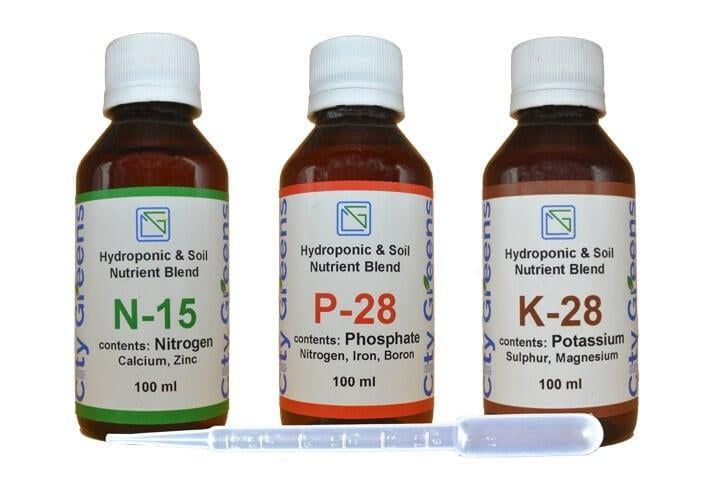No. 1 - Choose a good medium to begin with
Whether liquid or solid, the growing medium should facilitate growth by having certain characteristics such as:-
- A good balance between water retention and drainage
- Inert nature (free of chemicals and agents that can react)
- Being reusable
- Being clean and sterile
- Having a balanced pH (should be in the zone that allows for nutrient absorption)
No. 2 - Ensure proper aeration of roots
Roots need to be in contact with air to be able to breathe and grow. Hence, it is vital to ensure that the media you choose allows proper aeration of roots. In the case of a water-based system like DWC, a standard aquarium pump can do the job of aeration. While using cocopeat, it is advisable to mix it with other media like gravel, hydrotons/clay pebbles, coco chips, wood shavings, etc. to improve aeration.
No. 3 - Provide external nutrition to the plants
Since the inert soilless medium will have zero nutrients to start with, it is vital to ensure that nutrition is provided to the plant externally. In the absence of additional nutrition, plants will starve and die a slow death. CityGreen's Symphony Nutrition puts you in full control of meeting your plant's nutritional requirements.
No. 4 - Don't expose the root system to sunlight
Sunlight should not enter the root zone. The natural habitat of roots is under the ground in zero light conditions. If the root system is exposed to sunlight, it may result in algae and fungi growth. The roots will turn brown, and the plant may not grow to its optimum potential.
No. 5 - Monitor and maintain the pH of the medium
Plant's roots can absorb nutrition only in an optimal pH range. This range varies slightly for different plant families. For optimal growth of a plant, maintain the pH and EC of the growing medium within its optimal range. This will ensure that plants can absorb and accept the nutrition being provided, which in turn will help the plants to grow.
No. 6 - Protect seeds from predators
Seeds are a very high source of nutrition to these creatures, Especially ants. Ants thrive on seeds. Make sure to protect the seeds from ants. At the time of germination, keep the seeds in an area away from where pests and rodents can attack them.
No. 7 - Keep the sown seeds away from sunlight
It is a good idea to cover the seeds until they germinate. Most seeds germinate under the ground. While germinating seeds, one should try to replicate their natural environment. Seeds should be sown, preferably in a dark, warm place to facilitate germination. Seeds have enough sources of nutrition and "life." They do not need to be provided with extra nutrition at the germination phase. All they need is warmth and moisture.
No. 8 - Ensure enough room for root growth
Ensure that roots get enough room to grow. Always know (if possible) the extent of root size and provide sufficient room for the roots to grow by choosing a container or vessel of appropriate size. If roots do not receive enough space to spread and grow, this will impact the growth of the plant as well.
No. 9 - Remember, plant spacing is important
Plant spacing is important to allow plants to spread out and grow fully. If growing in an NFT channel, plan the spacing of the plants such that its leaves have enough room for growth and expansion. A higher number of plants spaced little apart may give lower yields than a lesser number of plants appropriately spaced.
No. 10 - For easy availability of nutrients to plants, go for foliar spray
Foliar feeding helps increase yield during the bloom phase. A direct foliar spray of nutrients to the plants is beneficial. A foliar spray will aide the nutrition intake for the plant through the leaves. However, you should not use this method as a substitute method of providing nutrition to the plants by eliminating the nutrition channel to the roots.
Happy Growing!
